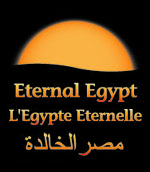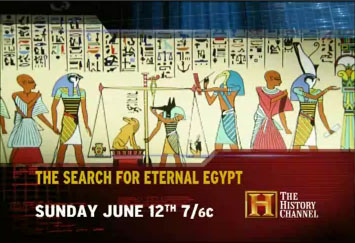Dayjob
I’m just back from the annual gathering of my particular tribe inside of IBM and I figured I’d take the time to tell you, loyal readers, actually what I do for a living. I’ve occasionally mentioned projects here but never actually talked about what I do. This is not because of some corporate policy. In fact, IBM’s external blogging guidelines are some of the most liberal in the industry. Many of our executives blog externally and quite candidly. Internally, blogs thrive for personal use, project teams, and professional topics.
I work for IBM’s Corporate Community Relations, a name which really doesn’t do a good job of describing our mission in the company. In a nutshell, we’re the group responsible for demonstrating innovation that matters to the world (as opposed to innovation that matters only to our company or to our customers, for example). Our programs are what might have traditionally been considered philanthropy or corporate social responsibility, but really that suggests a disconnect from the business itself. IBM Corporate Community Relations is not a function of corporate marketing but rather a group within our Innovation and Technology management line. Why is this important? Because we don’t view corporate citizenship as merely an extension of our brand. Of course, it is that in part — what you do is as much your brand as any logo or slogan — but addressing social, educational, and humanitarian problems is a lot more important than marketing. As a company of 330,000 employees in over 170 countries our “community relations” efforts have to amount to more than sponsoring the local Little League team or cutting checks to charities. Here’s a smattering of what we do.
On Demand Community – IBM’s tool for matching employees to community volunteer efforts and for preparing them with materials and training. Hours volunteered earn credit towards making a cash grant to the community organization. Amazingly successful: 60,000 employees are signed on as volunteers with over half coming from outside the US. Over 3,000,000 volunteer hours logged since the end of 2003.
Transition to Teaching – First-of-its-kind program to address the shortage of high quality math and science teachers in America. As part of the pilot IBM will pay the tuition of employees interested in leaving IBM for a career in education.
World Community Grid – Our program for solving computation-intensive projects in the life sciences. The current project FightAids@Home allows people all over the world to contribute idle processing power on their own machines to create a distributed virtual supercomputer powering the search for a cure for AIDS.
TryScience – Long-running science meta-museum with activities and virtual field trips for children and educators. Also a successful kiosk program distibuted to museums worldwide.
Web Adaptation – Project to donate accessibility technology for web users with vision and/or motor skills impairment.
KidSmart Early Learning Program – Early childhood education initiative which includes the KidSmart learning guide site and donations of Young Explorer computer systems to schools around the world.
¡TradúceloAhora! – Education-focused automatic online machine translation for English and Spanish, soon to providing instant e-mail translation.
IBM Crisis Response – Among the myriad ways IBM assisted during the Asian tsunami and US hurricane disasters of the past year, we shipped thousands of biometrically-enabled PC’s for tracking of displaced persons that tied into a system for first-responders and aid organizations to use during recovery. For Katrina, among other things, we developed the employment opportunity portal called Jobs4Recovery. Unlike many companies, IBM refused to capitalize on the public relations aspects of recovery assistance, which is why you won’t find much information about our crisis programs.
The Genographic Project – Supercool collaboration with National Geographic to map the dispersal patterns of humans out of Africa (and by extension the nature of human diversity) by analyzing the inherited mutations in indigenous peoples worldwide. Public participation is encouraged; you can swab your cheek for placement on the world migration maps. Think of it as macrogenealogy.
Eternal Egypt – Must I tell you more about this?
Well I suppose I didn’t answer the question about what I do, in particular. For the valiant few who have made it this far in a too-long post, I’ll note that I manage all the programs in CCR that relate to cultural heritage. This includes, obviously, Eternal Egypt above plus two truly exciting new projects which I can’t yet talk about but which very careful readers of this site might have an inkling about. I work with project managers, developers, and designers and of course with our partners to deliver these types of projects. It is a great gig, I have to admit, getting to work in high technology and culture at the same time.
Recently, our CEO Sam Palmisano remarked that “the world won’t look at you as a great company if all you do is make a lot of money.” I suppose you could say that the goal of my team in IBM is to make it that great company.
My goodness, you’d think I was paid to do that. What ever happened to bloggers who dish the dirt on their employers?
Less feel-good posts coming, promise.
Where are they now?
It isn’t an overstatement to say that my life would be different if not for Anucha Browne-Sanders. According to the headlines today I’m guessing Isiah Thomas might say the same thing. Anucha used to work for IBM and she brought me my very first project, what became the State Hermitage Museum website and the thousands of digitized images on it. Anucha was larger than life to me. Fresh out of grad school I was naive and eager where Anucha was bold and forthright. She had heard of my group’s work and so she brought an IBM executive down from New York to see if we actually had the goods to deliver. We did and I went to Russia with Anucha and the rest is a history that I consistently mark as my professional beginning.
So now she and Isiah Thomas take their quarrel to the public. I really never liked that guy, but who knows. Guess I’ll follow it in the press like everyone else.
Conferences call
Gonna be at a couple of conferences in March. If you’re attending and want to meet up, drop me a line.
March 11-14, South by Southwest, Austin. Very first panel. Yeah there’ll be tons of people there.
March 22-25, Museums and the Web, Albuquerque. No paper this year (and no Best of the Web!), just glad to observe for a change.
Oh, also, the video from my presentation at UCLA is available online. Prepare to be rivetted to your seat.
FightAIDS@Home

Lots of great new things happening at the World Community Grid. It seems like it has been running for a lot longer than a year, but our first birthday just passed and we’re happy to announce a new project running on the grid to contribute to AIDS research. FightAIDS@Home uses computational methods to identify new candidate drugs to block HIV protease, a key molecular structure that, when blocked, stops the virus from maturing.
For the last year the World Grid ran the Human Proteome Folding Project, which has been providing scientists with data on how individual proteins within the human body affect health, enabling them to develop new cures for diseases like lyme disease, malaria and tuberculosis. Scientists now have descriptions of 120,000 protein domains that are critical to human well-being.
Also new is section for children at sister-site TryScience.org that explains the concept behind grid.
If you’re unfamiliar with the Grid project, it basically allows you to use idle processor cycle time (or share it with other apps) to conrtibute to large, distributed computationally-intensive problems. A great way to participate in meaningful research.
Yes, I’m still hoping for a humanities-related grid project, but it is hard to argue for limited resources when there are so many humanitarian and life sciences challenges to solve.
Happy holidays
Rosh Hashanah, Ramadan, and the Chinese National Day holiday all overlapped this week. Interesting trivia, except that my three main projects — One Voice (in Israel), Eternal Egypt, and somethin’ somethin’ going on in China — are all on hiatus. Wonderful, really.
But why the hell am I still so busy? Answer: all the stuff I never get to because of “real” work. If I had another week then I would really be living the life of leisure, but of course all holidays come to an end.
Expelling freedom
Yesterday Governor Pataki killed the International Freedom Center, a project I have been working on for over a year. This facility, part of the original master plan for Ground Zero and once championed by Pataki, was intended as a complement to the 9/11 Memorial and Museum also to be built on the original parcel of land that the towers occupied.
The idea was simple and highly-regarded: to respond to great tragedy with great hope, to show the world that freedom is the opposite of the forces that led to the destruction of the World Trade Center. The IFC had wide bipartisan support. It was led by a personal friend of the President’s and advised by academics on both sides of the political spectrum as well as relatives of victims. The governor, the mayor, the LMDC, and everyone else directly involved in the rebuilding of Ground Zero was pleased with this approach.
Until a grieving a family member with a political agenda provided an argument that set the conversative blogosphere and news networks aflame. She claimed that presenting multiple perspectives on freedom — what it means to different people, how it is struggled for, how the ideal of freedom guides and misguides our nation and the world — that this multitude of voices would end up “blaming” America for 9/11. Her rhetorical trick (which the right lapped up and spewed out again and again) was to conflate a multiplicity of perspectives on freedom with a multiplicity of perspectives on what happened on that horrible day. These are fundamentally different things. Yet, the distinction was lost on the grass-roots bloggers who galvanized victim’s relatives and first responder organizations in NYC to their cause, pouring salt in the open wounds of these family members by telling them that the IFC would dishonor their deceased loved ones.
Soon the IFC was labelled as anti-American. And the press loved that. The screech of the media feedback loop made this falsehood louder and louder. The Bush Administration early on left it to NYC to decide on the IFC fate. Pataki waffled and made the IFC (and Drawing Center — a one-time tenant of the same space) promise never to do anything that would “denigrate America”. The IFC agreed to this. Yet, Pataki still killed the Center, apparently having made up his mind anyway.
If this has taught us anything it is that emotions are still extremely raw — too raw for reasoned, non-politicized discussion — when it comes to the terrorist acts of 9/11. (Even the Flight 93 Memorial in Pennsylvania finds itself embroiled in a controversy of dubious merit.) Though the wounds will never heal for many people, the passing of time will permit a critical distance from which to judge the various proposals for how to treat the space. But there is no time. Leaving Ground Zero unbuilt temporarily seems like a weak position to politicians. So Pataki has put an end to the IFC and suggested that the memorial museum, currently underground, will occupy the building once designed for it. Meanwhile, across the street, an additional 300,000 square feet of retail space has been approved.
The International Freedom Center would have been a noble response to the vile acts of people imprisoned by perverse conviction. Now, if the “Take Back The Memorial” groups have their way visitors to Ground Zero will be treated to the twin horrors of an oversized memorial devoted to graphically retelling the story of Sept. 11 and a monstrous retail mall begging for their tourist dollars.
Are crushed fire trucks festooned with American flags really an appropriate way to memorialize what happened that day? Wasn’t more assaulted that day than people and property?
Jobs4Recovery
It is good to drop everything you are working on once in a while, you know? After Katrina hit I was asked to develop a quick employment portal for job-seekers in the states most affected by the disaster. The result, a partnership between IBM and the US Chamber of Commerce, is a search front-end that links into data from Indeed.com and JobCentral.com, plots results via Google Maps, and delivers state-specific secondary resources. This is what happens when you have a smart, talented team to work with.
Need a job? http://www.jobs4recovery.com
Or post one.
Let’s get to work people! There’s much to do.
Toot toot

Eternal Egypt is Macromedia’s Showcase Site of the Day. Thanks, Macrodobe! (Remember when Cool Site of the Day was a must-visit web destination in the Netscape era?)
Might as well mention that the site also won a Webby Worthy award recently and, from a while back, a Best of the Web at Museums and the Web 2005.
Toot.
Searching, searching

Remember those trips to Egypt from late last year and early this year where I was traipsing around with a film crew? Well, the documentary is finally going to be broadcast and I’m very pleased with it. Kunhardt Productions and especially the writer-director Graham Judd did a fantastic job. I get to play armchair geek Egypt tech guy in the last part of the show.
The subject of the show is the history of Egyptology, a survey of major trends in the discovery and documentation of Egypt’s historic past. The work of my team at IBM and our partner CultNat on the Eternal Egypt project is featured in the final “act” of the show — the high-tech continuation of a tradition of documentation and preservation that stretches back in the modern era to Napoleon. My team also developed the prominently-featured 3-D environments used to illustrate certain segments of the show. The fidelity and dramatic quality of these environments surpass anything on the website.
We don’t chisel into the pyramids with a robot. We don’t claim to have found the mummy of Nefertiti. We don’t even mention the death of Tutankhamun. But this is why you are going to tune in, right? Something fresh!
More information at The History Channel.














